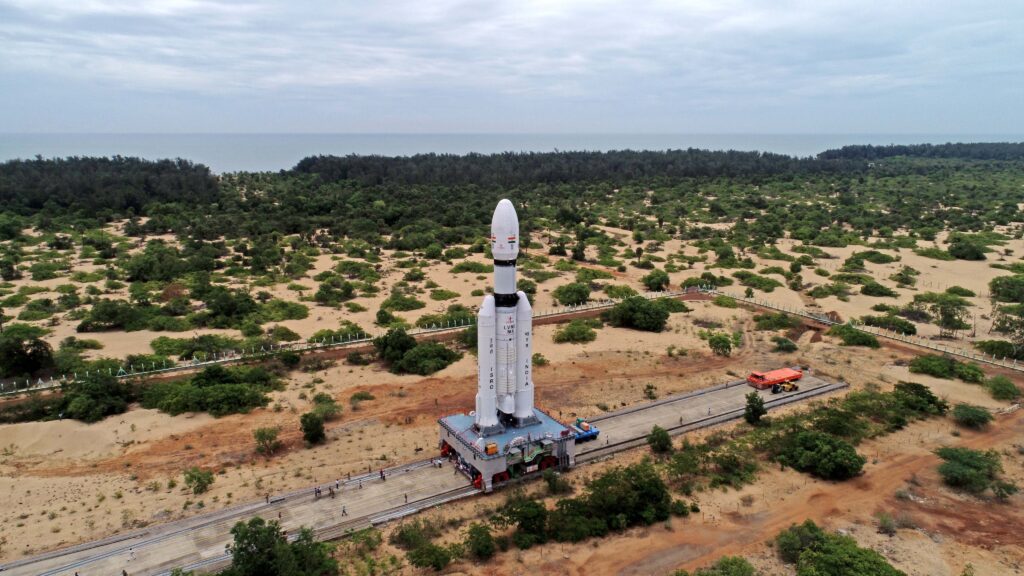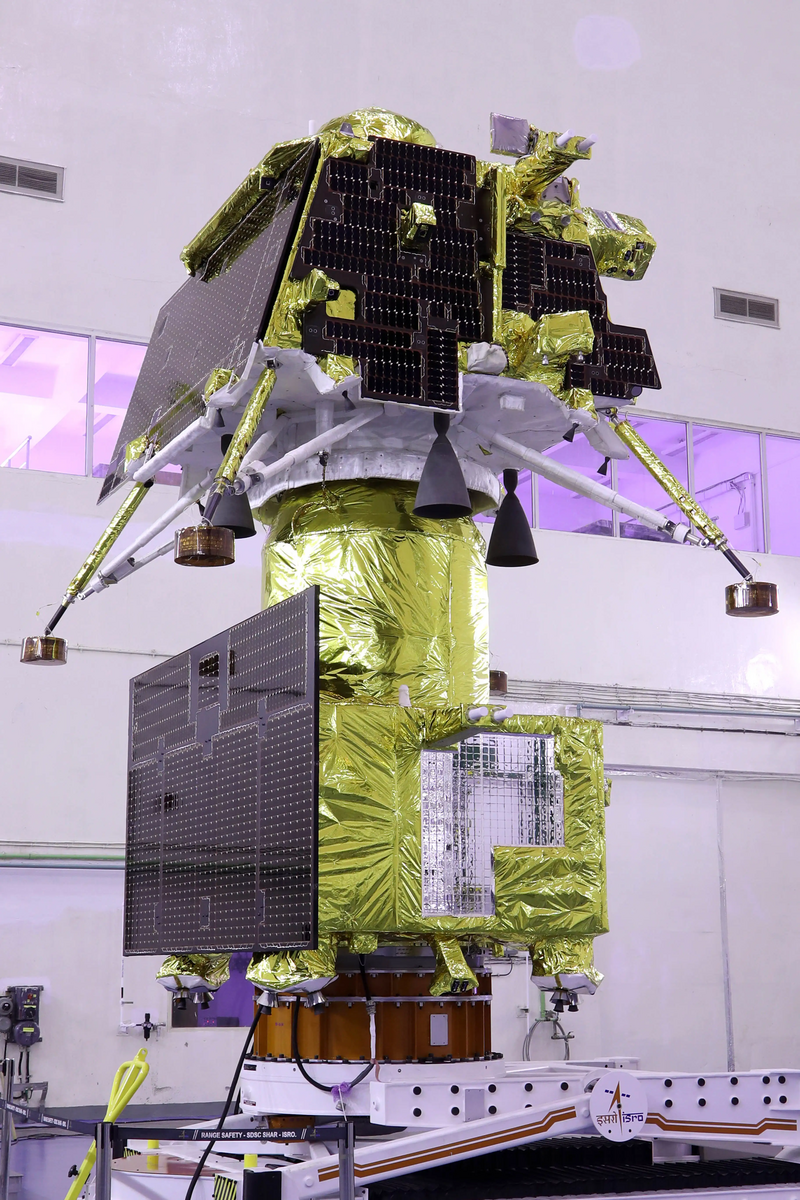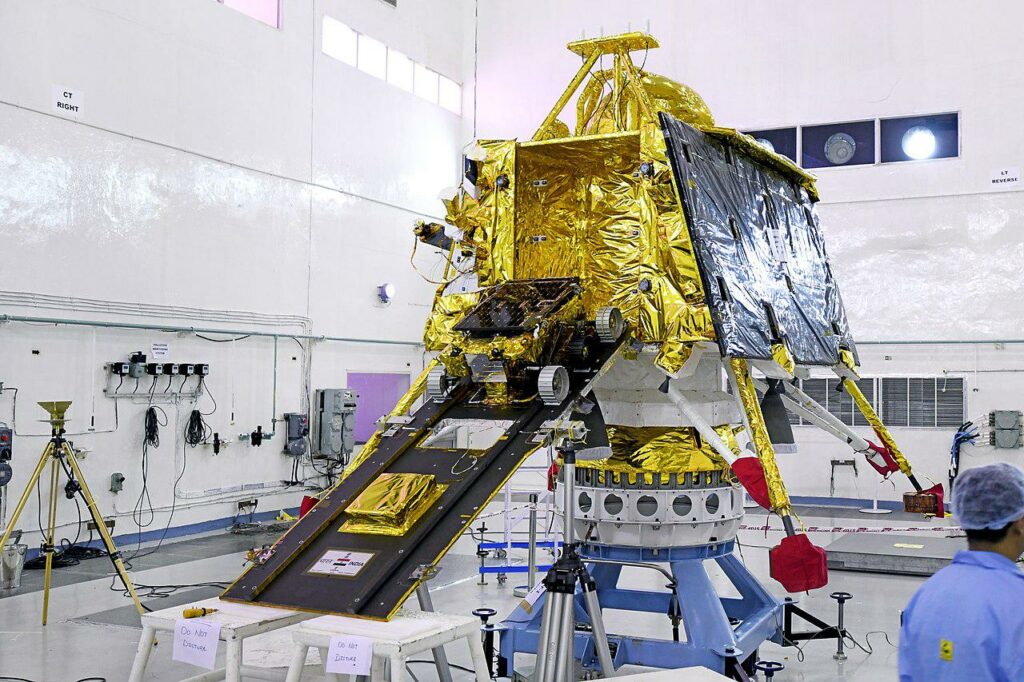The Chandrayaan-3 mission will be launched on July 14, 2023. This is stated in a post made by the Indian Space Research Organization (ISRO).
Technical design of Chandrayaan-3
Chandrayaan-3 will be India’s second attempt to make a soft landing on the Moon. The mission will go into space on July 14. It will be launched using an LVM3 rocket from the territory of the Satish Dhawan Space Center.

The spacecraft consists of a flight module and a descent platform with a lunar rover. The mass of the flight module is 2148 kg. It will have to put Chandrayaan-3 into a 100-kilometer selenocentric orbit.
After separation of the descent platform, the flight module will remain in orbit and will be used as a data repeater. In addition, it is equipped with the SHAPE scientific tool. The tool will measure the spectral and polarimetric characteristics of the Earth. This data will be useful to scientists studying Earth-like exoplanets. The tool will measure the spectral and polarimetric characteristics of the Earth. This data will be useful to scientists studying Earth-like exoplanets.

The mass of the descent platform is 1752 kg (taking into account the 26-kilogram rover). It will attempt to land on the territory of the southern polar region of the Moon. If successful, India will become the fourth country in history to have managed this operation. At the moment, the landing is scheduled for August 23.
The Chandrayaan-3 descent platform is equipped with scientific instruments designed to study the thermal characteristics of the lunar regolith, the properties of near-surface plasma and seismic activity. There is also a corner reflector on board the platform.
As for the rover, it is equipped with instruments designed to conduct the mineralogical composition of the lunar surface. Both the lunar rover and the platform are designed to work for one lunar day (14 Earth days).
India’s second attempt to reach the Moon
Recall that the first attempt to land an Indian spacecraft on the Moon took place in September 2019. This task was assigned to the Vikram descent platform. It successfully separated from the Chandrayaan-2 orbital module and began to descend. But when the platform was at an altitude of only a few kilometers from the lunar surface, there was a malfunction in the braking engine. As a result, Vikram crashed.

After this failure, ISRO decided to repeat the landing attempt. Initially, Chandrayaan-3 was planned to be sent to the Moon in 2020, but due to the consequences of the COVID-19 coronavirus pandemic and various technical difficulties, the launch eventually shifted by three years.
Follow us on Twitter to get the most interesting space news in time
https://twitter.com/ust_magazine
